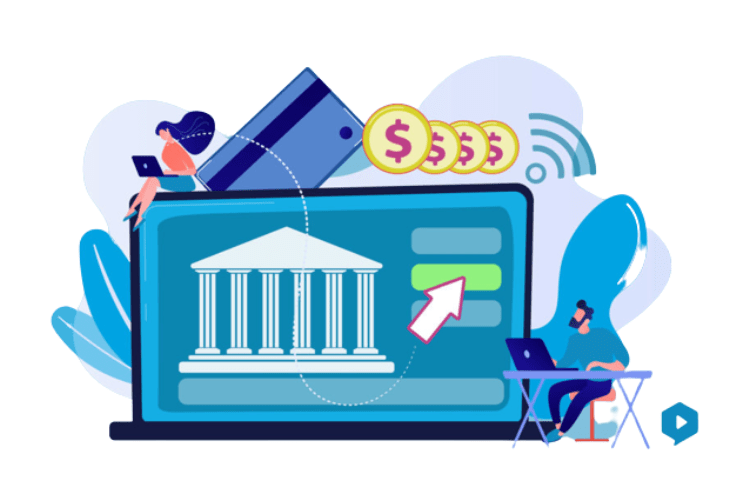Watch video summary
I. Introduction
Payment processing is an essential aspect of modern commerce, impacting both businesses and consumers. It facilitates smooth transactions, enabling customers to pay for goods and services using various methods, while businesses receive payments seamlessly. In this article, we will delve into the world of payment processing, explore the key players involved, the stages of a transaction, and the different types of payment processing methods. We will also share our thoughts on the significance of payment processing in today’s commerce landscape and the importance of adapting to emerging trends and technologies.
II. Key Players in Payment Processing
A. Merchants
Merchants are the business owners or retailers that offer goods and services to consumers. They play a critical role in payment processing by selecting the payment methods they will accept and working with the appropriate payment processors and banks to facilitate transactions. Merchants need to choose a payment processor that best suits their needs and aligns with their business goals. In our opinion, it is essential for merchants to prioritize security, reliability, and cost-effectiveness when selecting a payment processor. Additionally, they should be proactive in adopting innovative payment solutions to meet customer expectations and stay competitive in the market.
B. Payment Processors
Payment processors are the intermediaries that handle payment transactions between merchants and customers. They are responsible for facilitating communication between the parties involved and ensuring that the transaction is authorized, cleared, and settled. In our view, payment processors should focus on providing a seamless and secure experience for both merchants and customers. They should also be transparent about their fees and offer competitive pricing to attract and retain clients. Furthermore, payment processors must stay updated on industry trends and be prepared to integrate new technologies and payment methods into their offerings.
C. Card Networks
Card networks, such as Visa, Mastercard, American Express, and Discover, set the rules and standards for processing card transactions. They act as the backbone of the payment processing ecosystem, ensuring that transactions are routed to the appropriate issuing and acquiring banks. We believe that card networks should continuously work on improving security and fraud prevention measures while maintaining an efficient and reliable system for processing transactions. They also need to adapt to the ever-changing needs of consumers and merchants, embracing emerging technologies and payment methods to stay competitive in the market.
D. Issuing and Acquiring Banks
Issuing banks provide customers with credit or debit cards and are responsible for approving or declining transactions based on the cardholder’s account status. Acquiring banks, on the other hand, work with merchants to process and settle transactions. Both banks play crucial roles in ensuring the smooth functioning of the payment processing ecosystem. In our opinion, these banks should collaborate and innovate to meet the evolving demands of the market while maintaining high levels of security and customer satisfaction. This includes working closely with card networks and payment processors to develop new products and services that cater to changing consumer preferences.
III. Stages of a Transaction
A. Authorization
Authorization is the first stage of a transaction, where the customer’s card details are checked for validity and funds availability. The payment processor sends the transaction details to the issuing bank, which either approves or declines the transaction. In our view, swift and accurate authorization is vital to ensure a smooth and seamless payment experience for customers and merchants. The use of advanced fraud detection and risk management tools can help improve the authorization process and enhance overall transaction security.
B. Clearing
Clearing is the process of transferring transaction data from the payment processor to the acquiring bank and then to the issuing bank. During this stage, transaction information is verified, and adjustments are made to the customer’s account balance. We believe that the clearing process should be efficient and secure to minimize the risk of errors and maintain trust in the payment system. The adoption of technologies like blockchain and artificial intelligence can potentially streamline the clearing process and improve its overall efficiency.

C. Settlement
Settlement is the final stage of a transaction, where funds are transferred from the issuing bank to the acquiring bank and eventually to the merchant’s account. This process ensures that merchants receive payment for the goods and services they provide. In our opinion, timely and accurate settlement is essential for maintaining healthy cash flow and business operations for merchants. Implementing robust reconciliation tools and automated settlement processes can help improve the accuracy and timeliness of settlements, enhancing the overall payment experience for both merchants and customers.
IV. Types of Payment Processing Methods
A. Traditional Point of Sale (POS) Systems
Traditional POS systems are hardware-based systems that enable merchants to accept card payments at their physical stores. These systems offer various features, such as inventory management, sales tracking, and customer data management. We believe that while traditional POS systems are still relevant, they need to adapt to the changing landscape of commerce by integrating with mobile and online payment methods. Additionally, merchants should consider upgrading their POS systems to support contactless payments and other emerging payment technologies to provide a more convenient and secure payment experience for their customers.
B. Mobile Point of Sale (mPOS) Systems
mPOS systems are portable, smartphone or tablet-based solutions that allow merchants to accept card payments anywhere. These systems offer greater flexibility and mobility compared to traditional POS systems. In our view, mPOS systems are a game-changer for small businesses and merchants operating in unconventional settings, such as pop-up stores and food trucks. By leveraging mPOS technology, businesses can provide a more personalized and convenient payment experience for their customers, driving increased sales and customer satisfaction.
C. Mobile Payments
Mobile payments refer to transactions made using mobile devices, such as smartphones and wearables. These payments can be made through digital wallets, QR codes, or contactless technologies like Near Field Communication (NFC). We believe that mobile payments are the future of commerce, offering unparalleled convenience and security to both consumers and merchants. As more consumers adopt mobile payments, businesses must be prepared to accept and integrate these payment methods into their existing systems to stay competitive and meet customer expectations.
V. Conclusion
In conclusion, payment processing is a crucial aspect of modern commerce that ensures smooth transactions between businesses and consumers. The key players involved – merchants, payment processors, card networks, and issuing and acquiring banks – all contribute to the efficiency and security of the payment processing ecosystem. With the advent of new technologies and payment methods, such as mPOS systems and mobile payments, the landscape of commerce is continuously evolving. We believe that adapting to these changes and embracing innovation while maintaining security and customer satisfaction will be vital for the continued success of the payment processing industry. Businesses and financial institutions must work together to stay ahead of the curve and deliver the best possible payment experience to their customers.
Finally, here at Payine, we significantly benefit businesses by offering cutting-edge payment processing solutions that cater to the evolving needs of modern online businesses. We enable merchants to stay competitive and meet customer expectations for convenient, secure, and efficient transactions. Furthermore, our commitment to transparency, competitive pricing, and exceptional customer support ensures that businesses can navigate the ever-changing payment processing landscape with confidence, ultimately driving growth and enhancing customer satisfaction.




